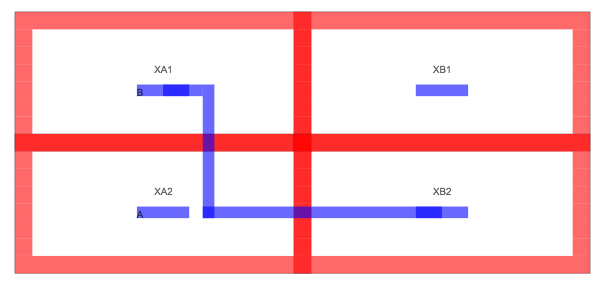Directed Route¶
DirectedRoute is for the cases were you want to access a port deep in the hierarchy, but it’s not available on top level via a port. The
DirectedRoute should be avoided if at all possible, because it’s hard linked to the hierarchy, so if you change instance names, or the hierarchy, they will no longer work. But it’s perfect for those tricky situations where ConnectivityRoute falls short.
The arguments for directed route are layer, net, and ‘route command’.
Route Command¶
A route command looks like this
"XA1:S-|--XB2:S"
The route command contains three parts, start rectangles path regex, route type, and stop rectangles path regex. See addDirectedRoute in [[LayoutCell]] for details.
A ‘path regex’ looks like this ‘XA1:XB2:D,XA2:XB2:D’, the colon denotes a hierarchy border, while the stuff between are the regular expressions used to match instance names. The last ‘D’ is the port name of an instance. Multiple paths can be specified in one routecommand, separated by a comma.
The -|– is the [[Route Type]] of this particular route command.
With the spice
.subckt TEST A B
XA1 B DDD
XA2 A DDD
XB1 B DDD
XB2 A DDD
.ends
{ "name" : "Directed_StartLeft_Left(-|--)",
"inherit": "TEST",
"beforeRoute": [
{"addDirectedRoutes" : [["M1","S","XA1:S-|--XB2:S"]]}
]
}
Will produce
